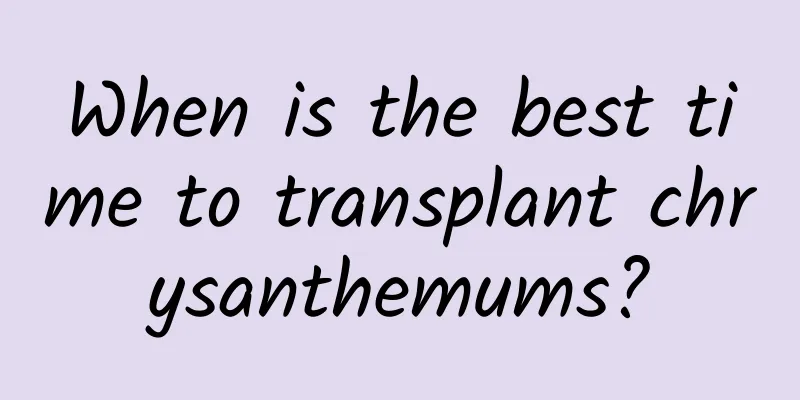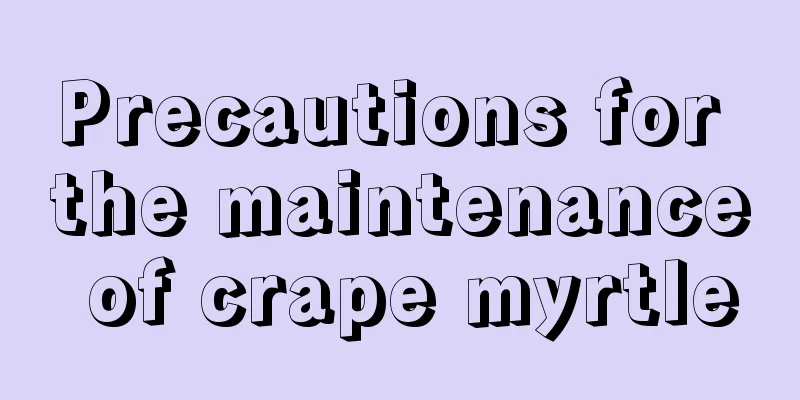When is the best time to transplant chrysanthemums?

|
When transplanting chrysanthemums, pay attention to the soil quality. It is best to use loose, breathable soil containing humus. If conditions do not permit, you can also mix humus, sandy soil and a portion of decomposed cake fertilizer to prepare the transplanting soil. This will make the soil sufficient in nutrients and be more conducive to the later growth of chrysanthemums. Chrysanthemum transplanting timeThe time for transplanting chrysanthemums varies depending on the variety, but basically it is most suitable to transplant them in spring and autumn, especially spring is the best time for transplanting them. The specific time is around mid-April. It is best to choose to transplant them in the evening of a cloudy or sunny day or after rain, because this period is the period when chrysanthemum seedlings grow vigorously. Transplanting at this time can greatly increase the survival rate of chrysanthemums. Chrysanthemum transplanting methodFirst of all, chrysanthemums must be transplanted with soil. Then, before transplanting chrysanthemums, you must choose suitable soil for it. It must have good fertility and good ventilation and drainage. Secondly, when transplanting, you must choose weather that is not too hot, so that the chrysanthemums will not become dehydrated due to high temperature. Avoid direct sunlight. Management of chrysanthemum after transplantingAfter transplanting, chrysanthemums need to rest for a period of time before they can be watered. When watering, you should follow the principle of watering when the soil is dry and watering when it is wet. Also, do not water excessively, otherwise the chrysanthemums will cause root rot due to water accumulation. Then you need to pay attention to the selection of fertilizers. Phosphorus fertilizer can be used as fertilizer for chrysanthemums. When fertilizing, you should also pay attention to timely watering and dilution to keep the transplanting site moist. In addition, the chrysanthemums are weaker after transplanting and are more prone to insect pests than usual, so you need to pay attention to timely prevention and control. |
<<: How to take cuttings of Christmas cactus
>>: The advantages and disadvantages of big pink rose
Recommend
What causes spider plant leaves to curl?
1. Lack of water Reason: It may be due to lack of...
Do plants need watering every day?
Do you water your plants every day? Plants genera...
The growth environment and local conditions of the fortune tree
Growth environment and conditions of the fortune ...
Symptoms of nitrogen deficiency in plants, what to do
1. Symptoms of nitrogen deficiency 1. Slow growth...
Guangxi vegetable variety pictures Guangxi specialty vegetable variety
Guangxi is a major agricultural province and the ...
How to prune bamboo begonia
1. It is more suitable to cut in spring or autumn...
The difference between firecracker flowers and firecrackers
Introduction to Firecracker Flowers and Firecrack...
How to grow radish
1. Sunlight For growing radish, you can provide a...
The efficacy and function of Cattleya
The role of Cattleya Enjoy the flowers and leaves...
The Flower Language and Legend of the Beautiful Leafed Banana
The Flower Language of the Beautiful Leafed Banan...
How to grow Huayuejin
1. Breeding conditions 1. Soil: The soil should b...
What to do if the lucky bamboo leaves wilt
1. Reasons and solutions 1. Improper lighting If ...
How to trim Lady Charlotte
Lady Charlotte Pruning Time Lady Charlotte is usu...
Is Cycas a tree or a shrub?
1. Trees Cycas revoluta, commonly known as iron t...
Disease control methods for rapeseed
Major diseases Rapeseed sclerotinia, a disease th...









